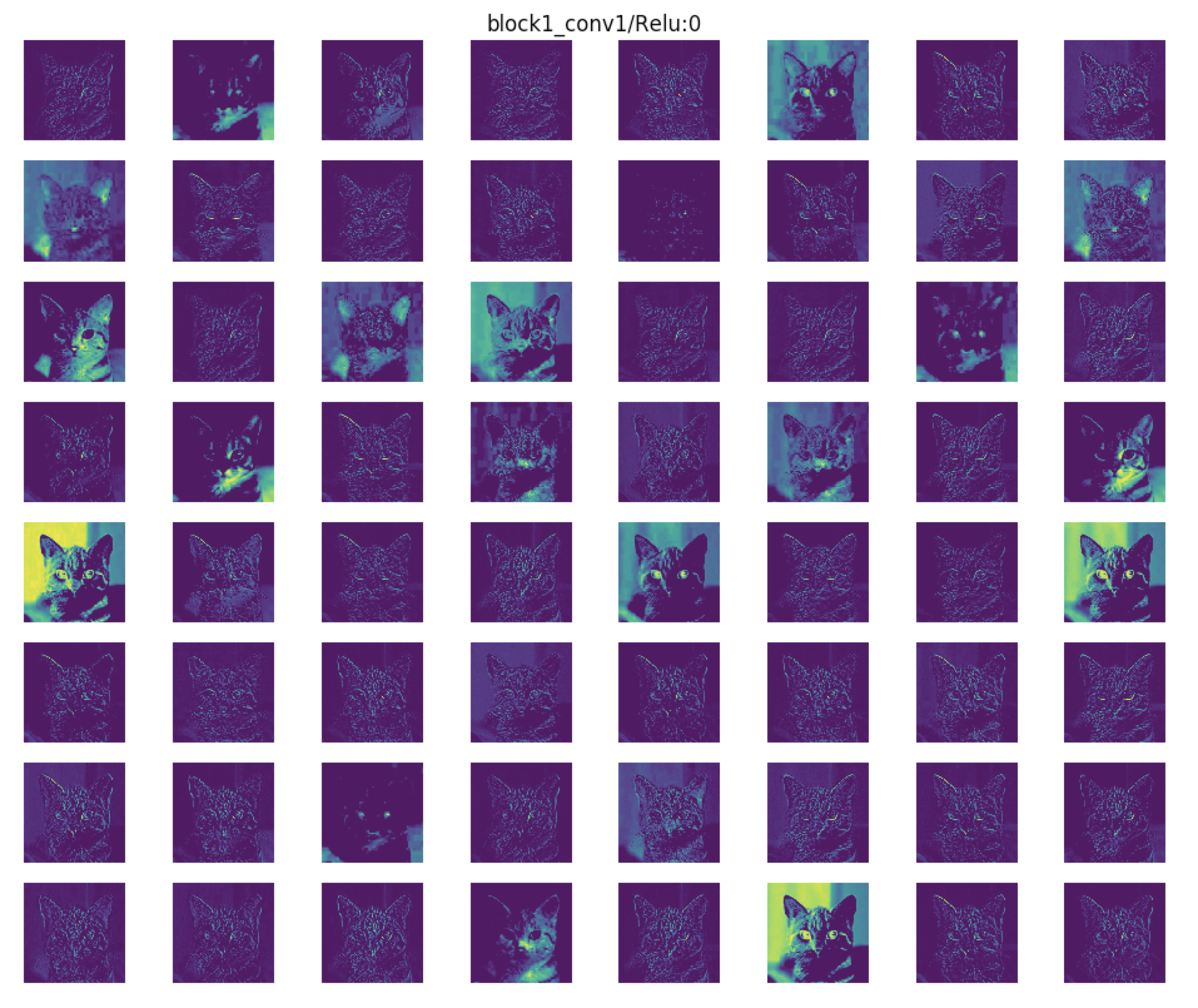pip install keractYou have just found a (easy) way to get the activations (outputs) and gradients for each layer of your Keras model (LSTM, conv nets...).
- get_activations
- display_activations
- display_heatmaps
- get_gradients_of_trainable_weights
- get_gradients_of_activations
- persist_to_json_file
- load_activations_from_json_file
keract.get_activations(model, x, layer_name=None, nodes_to_evaluate=None, output_format='simple', auto_compile=True)Fetch activations (nodes/layers outputs as Numpy arrays) for a Keras model and an input X. By default, all the activations for all the layers are returned.
model: Keras compiled model or one of ['vgg16', 'vgg19', 'inception_v3', 'inception_resnet_v2', 'mobilenet_v2', 'mobilenetv2', ...].x: Numpy array to feed the model as input. In the case of multi-inputs,xshould be of type List.layer_name: (optional) Name of a layer for which activations should be returned.nodes_to_evaluate: (optional) List of Keras nodes to be evaluated.output_format: Change the output dictionary key of the function.simple: output key will match the names of the Keras layers. For example Dense(1, name='d1') will return {'d1': ...}.full: output key will match the full name of the output layer name. In the example above, it will return {'d1/BiasAdd:0': ...}.numbered: output key will be an index range, based on the order of definition of each layer within the model.
auto_compile: If set to True, will auto-compile the model if needed.
Returns: Dict {layer_name (specified by output_format) -> activation of the layer output/node (Numpy array)}.
Example
import numpy as np
from keras import Input, Model
from keras.layers import Dense, concatenate
from keract import get_activations
# model definition
i1 = Input(shape=(10,), name='i1')
i2 = Input(shape=(10,), name='i2')
a = Dense(1, name='fc1')(i1)
b = Dense(1, name='fc2')(i2)
c = concatenate([a, b], name='concat')
d = Dense(1, name='out')(c)
model = Model(inputs=[i1, i2], outputs=[d])
# inputs to the model
x = [np.random.uniform(size=(32, 10)), np.random.uniform(size=(32, 10))]
# call to fetch the activations of the model.
activations = get_activations(model, x, auto_compile=True)
# print the activations shapes.
[print(k, '->', v.shape, '- Numpy array') for (k, v) in activations.items()]
# Print output:
# i1 -> (32, 10) - Numpy array
# i2 -> (32, 10) - Numpy array
# fc1 -> (32, 1) - Numpy array
# fc2 -> (32, 1) - Numpy array
# concat -> (32, 2) - Numpy array
# out -> (32, 1) - Numpy arraykeract.display_activations(activations, cmap=None, save=False, directory='.', data_format='channels_last')Plot the activations for each layer using matplotlib
Inputs are:
activationsdict - a dictionary mapping layers to their activations (the output of get_activations)cmap(optional) string - a valid matplotlib colormap to be usedsave(optional) a bool, if True the images of the activations are saved rather than being showndirectory: (optional) string - where to store the activations (if save is True)data_format: (optional) tring - one of "channels_last" (default) or "channels_first".
The ordering of the dimensions in the inputs. "channels_last" corresponds to inputs with shape (batch, steps, channels) (default format for temporal data in Keras) while "channels_first" corresponds to inputs with shape (batch, channels, steps).
keract.display_heatmaps(activations, input_image, save=False)Plot heatmaps of activations for all filters overlayed on the input image for each layer
Inputs are:
activations: a dictionary mapping layers to their activations (the output of get_activations).input_image: numpy array of the image you inputed to the get_activations.save(optional) bool - if True the images of the activations are saved rather than being shown.fix: (optional) bool - if automated checks and fixes for incorrect images should be run.directory: string - where to store the activations (if save is True).
keract.get_gradients_of_trainable_weights(model, x, y)modelis akeras.models.Modelobject.x: Numpy array to feed the model as input. In the case of multi-inputs,xshould be of type List.y: Labels (numpy array). Keras convention.
The output is a dictionary mapping each trainable weight to the values of its gradients (regarding x and y).
keract.get_gradients_of_activations(model, x, y, layer_name=None, output_format='simple')modelis akeras.models.Modelobject.x: Numpy array to feed the model as input. In the case of multi-inputs,xshould be of type List.y: Labels (numpy array). Keras convention.layer_name: (optional) Name of a layer for which activations should be returned.output_format: Change the output dictionary key of the function.simple: output key will match the names of the Keras layers. For example Dense(1, name='d1') will return {'d1': ...}.full: output key will match the full name of the output layer name. In the example above, it will return {'d1/BiasAdd:0': ...}.numbered: output key will be an index range, based on the order of definition of each layer within the model.
Returns: Dict {layer_name (specified by output_format) -> grad activation of the layer output/node (Numpy array)}.
The output is a dictionary mapping each layer to the values of its gradients (regarding x and y).
keract.persist_to_json_file(activations, filename)activations: activations (dict mapping layers)filename: output filename (JSON format)
keract.load_activations_from_json_file(filename)filename: filename to read the activations from (JSON format)
It returns the activations.
Examples are provided for:
keras.models.Sequential- mnist.pykeras.models.Model- multi_inputs.py- Recurrent networks - recurrent.py
In the case of MNIST with LeNet, we are able to fetch the activations for a batch of size 128:
conv2d_1/Relu:0
(128, 26, 26, 32)
conv2d_2/Relu:0
(128, 24, 24, 64)
max_pooling2d_1/MaxPool:0
(128, 12, 12, 64)
dropout_1/cond/Merge:0
(128, 12, 12, 64)
flatten_1/Reshape:0
(128, 9216)
dense_1/Relu:0
(128, 128)
dropout_2/cond/Merge:0
(128, 128)
dense_2/Softmax:0
(128, 10)
We can visualise the activations. Here's another example using VGG16:
cd examples
pip install -r examples-requirements.txt
python vgg16.py

Outputs of the first convolutional layer of VGG16.
Also, we can visualise the heatmaps of the activations:
cd examples
pip install -r examples-requirements.txt
python heat_map.py


